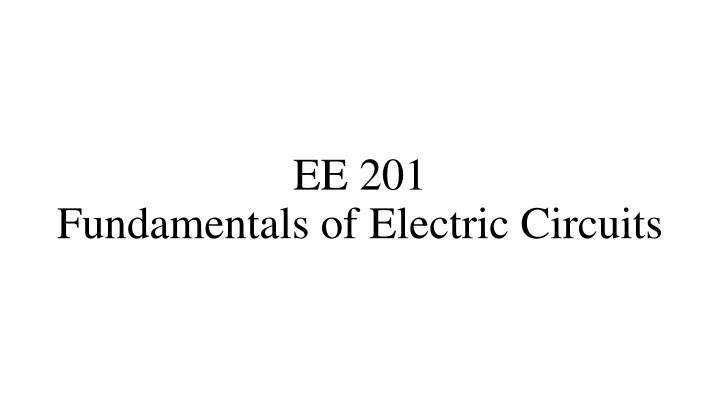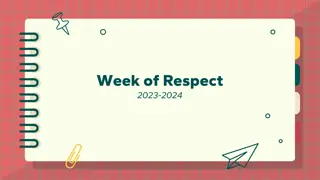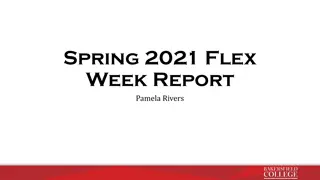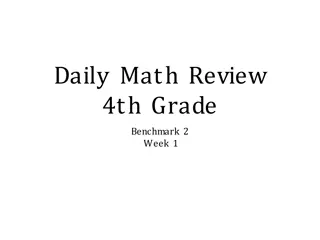
Fundamentals of Electric Circuits Lecture Summaries and Examples
Discover lecture summaries and examples covering topics like charge, current, voltage, resistance, power, and energy in the fundamentals of electric circuits course taught by Anmar Arif. Prepare for exams and homework with detailed explanations and visuals.
Uploaded on | 2 Views
Download Presentation

Please find below an Image/Link to download the presentation.
The content on the website is provided AS IS for your information and personal use only. It may not be sold, licensed, or shared on other websites without obtaining consent from the author. If you encounter any issues during the download, it is possible that the publisher has removed the file from their server.
You are allowed to download the files provided on this website for personal or commercial use, subject to the condition that they are used lawfully. All files are the property of their respective owners.
The content on the website is provided AS IS for your information and personal use only. It may not be sold, licensed, or shared on other websites without obtaining consent from the author.
E N D
Presentation Transcript
EE 201 Fundamentals of Electric Circuits
Course Introduction Anmar Arif Lecturer/Assistant Professor PhD from Iowa State University on August 10, 2019 Office: ?? Office Hours: Sunday: 9:00 am 12:00 pm, 1:00 pm 3:00 pm Monday: 10:00 am 12:00 pm, 1:00 pm 2:00 pm If my office is open, come in Textbook Introductory Circuit Analysis By Robert L. Boylestad, 12th (or 11th or 10th) Edition, Published by Prentice Hall, 2001. Website https://fac.ksu.edu.sa/anarif
Grades Quizzes and Homework (20%) Exams (80%) Exam 1 (20%): Sunday, 20 October 2019 Exam 2 (20%): Monday, 25 November 2019 Final (40%): Monday, 23 December 2019
Lecture 1 - Summary The charge (Q , Coulombs (C) ) = No. of electrons 1.602 10 6= No. of electrons 6.242 1018 Current ( I , Amperes (A) ) = Charges (Q)/ time (t, seconds) ? =? ?? Voltage (V, Volts (V)) = Energy (W, Joule (J)) / Charge (Q) ? =? ? ?,? ? =?? ?
Lecture 2 Chapter 4 - Ohm s Law, Power and Energy
Resistance The flow of charge through any material encounters an opposing force This is due to collision between electrons and atoms These collisions convert electrical energy into heat This opposition is called resistance, the unit of a resistance is ohm Ohm s law: ? = ?/? + ? + ? ? = 1? ? = 1?
Power Electric power is defined as the rate, per unit time, at which electrical energy is consumed/transferred in an electrical circuit. ? =? ?= ? =? ?= ? ? ? = ? ? ? = ? ? = ? ? ? ? = ? ? = ? ? ? = ?2 ? Joule (J) seconds (s)= Watts (?) ?=? ? ?=?2
Energy The energy (W) is equal to the power multiplied by the time 1 hp = 746 W
Energy The energy (W) is equal to the power multiplied by the time 1 hp = 746 W
Efficiency ??????? ?????? 100 Efficiency ? = ???????= ?????? ????? ????
Exercise 1. If the total cost of an air conditioning after 24 hours is 4 SAR, how much power (in kW) is the AC consuming? (price = 18 halalah/kWh) 2. The work required to move a 5-C charge from point a to point b is 100 J. What is the voltage between a and b if the distance between a and b is 25 mm?






















